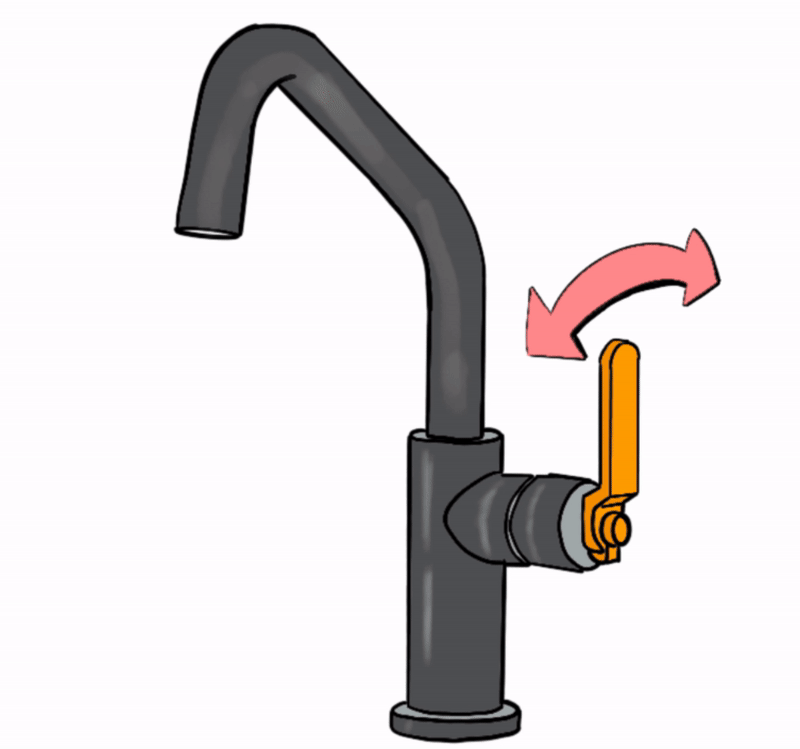Illuminating Faucet
Interactive Product Design

Overview:
Design an interactive product that motivates users with environmental saving and sustainability importance.
Tools
Fusion 360
Keyshot
Adobe Illustrator
Group Member
Xiaoyun Chen
Yuhan Zhou
Victoria Green
Nathan Luskey
My Role
Product Designer (Concept Design,3D model)
Market Researcher(Competitive analysis)
Introduction
Project Concept
We start the concept with a basic water faucet. When we leave the water running from the tap, we will notice wasting the water. However, when we go the lamp or light on when necessary, we won’t realize that we are destroying the electricity.


SAVE THE EVIROMENT
SAVE THE EVIROMENT
SUSTAINABILITY
SUSTAINABILITY
CHANGE YOUR HABITS
CHANGE YOUR HABITS
Competitive Analysis
Keyword: Household
One area of research for us was related to common household objects. These objects were centered around sinks, lighting, and interaction; our proposal's differences and similarities are shown below. Through this, we found a unique opportunity for our faucet to provide a natural mapping that plays on the affordances provided by a sink.
Similarities
Thrifty Faucet

Faucet
Interactive
LED Faucet

Faucet
Faucet
RGB Light
RGB Smart Bulb

RGB Light
Mood Express
Music Synced LED

RGB Light
Linked to sound
Gesture Sensor

Incorporates
Intuitive movements
Differences
Water as medium
Water as medium
No interaction
No physical mapping of controls
Controlled by sound
Incorporated movement
Graphical output
No emotional Connection
Keyword: Therapy
Another area of related work is therapeutic objects, and these can vary from the passive objects sitting in the background (like the white noise machine) to the very active objects (like the fidget ring). This wide field of different products are shown below to show how our sink could incorporate both passive and active measures to provide therapeutic interaction.
Similarities
Differences
Classic White Noise Machine

Smoothing
Volume and pitch control
Essential Oil Diffuser

Smoothing
Single output
Limited Interacitivity
Smell output
No interactive input
Fidget Ring

Anxiety relief
Play on affordances
Portable
No output
Weighted Blanket

Calming
Circadian Lamp

Light output
Therapeutic
Passive object
Targeted for seasonal disorder
Passive
IDEATION
Brainstorming
Before we settle down the details, we broke down the product attributes and tried to generate as many different ideas as possible around them. Below is the breakdown table of our brainstorming results.

Mood board
Brainstorming by words was fast but also had its limitation. To get more inspiration and get a better sense of what the product could look like and feel like, we collected images based on the ideas we had and created mood boards.






Concept Development
Digital Prototype
Since we had limited resources and could not physically prototype the Illuminating Faucet, we used the technology available to us, Processing and Arduino. We imported a drawing of the sink into processing and overlaid a shape to represent water flow, aka light. Using keyboard controls, you can turn the sink on and off and adjust the temperature, which is reflected in the color of the light. Blue is cold, and Red is warm. We intend to link the controls to the Arduino rather than the keyboard as it is what we would use for the physical prototype.
To communicate the concept, besides the sketches in the early stage, later we also created a 3D model with Fusion 360 and rendered it into photorealistic images of the product with Keyshot.




Physical Prototype
Using the Arduino, we demonstrate how we would use processing to show the sink while using controls attached to the board. We also show the LED light output we would use for the sink and its relation to the potentiometer. Distance is also taken into account to determine the volume of the water sound effects to simulate the experience.

Potentiometer

RGB LED

Proximity Sensor
Video demonstration of color warmth change
Sound & Distance Demonstration video
Future Work and Conclusion
For future development, we will build up the physical model as a table lamp size. If time and budget allow, we can build up a larger size for interactive artwork with more physical interaction with multiple people present in the exhibition. We can add to multiple interactions such as touching, walking distance, lighting, etc.
We used a potentiometer, an RGB led, and a proximity sensor to create a lamp with a faucet form. We used the RGB LED light to represent the water and the potentiometer to adjust the light color representing the water's temperature. The proximity sensor maps the sound of water splashing onto the distance from the hand.
The primary limitation we met is that due to the unique circumstances of covid-19, we could not model the prototype to test the concept's feasibility physically.